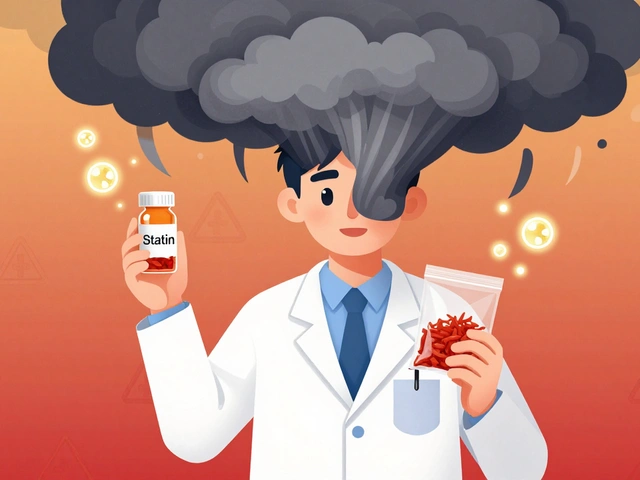Heart failure: what to watch for and what actually helps
Heart failure isn’t a single disease — it’s the name for when the heart can’t pump well enough for your body. That can mean breathlessness, tired legs, swollen ankles, or trouble breathing when you lie down. If any of that sounds familiar, you’ve come to the right place for practical steps you can use today.
Spotting trouble early
Watch your weight. Gaining 2 kg (about 4–5 lb) in 48 hours or a steady upward trend in days usually means fluid is building up. Check for new or worse swelling in your feet and legs, more breathlessness walking or at night, cough that won’t stop, or feeling very tired and lightheaded. If you get sudden breathlessness, chest pain, fainting, or blue lips, call emergency services.
Medications that help — and those to avoid
Common drugs that prolong life and ease symptoms include ACE inhibitors or ARBs (and newer ARNI drugs), beta-blockers, diuretics (water pills), and mineralocorticoid receptor antagonists. Diuretics help remove extra fluid; you’ll often notice weight drop and less swelling after a dose. If you have atrial fibrillation, blood thinners like warfarin (Coumadin) may be used — they need regular INR checks, which the site covers in plain language.
Not every heart or blood-pressure drug suits every person. For example, some calcium channel blockers (like verapamil) can lower the heart’s pumping power and may be a poor choice for reduced ejection fraction — our Calan (Verapamil) article explains that in detail. Also avoid NSAIDs like ketorolac (Toradol); they can cause fluid retention and make heart failure worse.
Take meds exactly as prescribed. Use a pill box, set phone alarms, and keep an up-to-date medication list for every doctor visit. If you feel dizzy, faint, or notice fast weight gain after starting a new drug, call your clinic.
Daily habits that help: aim for consistent sodium intake (many teams recommend under 2 g sodium per day but check with your clinician), fluid limits if advised (often 1.5–2 L/day), and weigh yourself every morning before breakfast. Small salt reductions and avoiding processed foods often cut fluid retention more than you’d expect.
Move when you can. Light exercise and walking, guided by your care team, improve stamina and mood. Vaccines for flu and COVID lower the chance of lung infections that can trigger flare-ups.
Keep follow-ups and tests. Echocardiograms, blood tests (kidney function, electrolytes, BNP), and phone or clinic check-ins guide medication changes and keep you out of hospital. If you use a blood thinner, follow dosing and monitoring rules closely.
If you want deeper reads on specific drugs or risks, our site has clear articles on Coumadin (warfarin) monitoring, verapamil use, and why some painkillers are bad for heart failure. Use those pieces to ask better questions at your next appointment.
Living with heart failure is a series of small, smart choices: take meds, watch weight, eat less salt, stay active, and call your team early when things change. Those steps lower the chance of emergency visits and help you feel more in control.
As a blogger, I recently came across the significant role Lisinopril plays in heart failure treatment. Lisinopril is a type of medication called an ACE inhibitor, which helps to widen blood vessels, making it easier for the heart to pump blood throughout the body. This ultimately helps to reduce the strain on the heart and improve overall heart function. Additionally, Lisinopril is known to lower blood pressure and reduce the risk of further complications in patients with heart failure. It's fascinating to learn how medications like Lisinopril can make such a positive impact on the lives of those suffering from heart failure.



